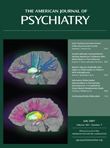The American Academy of Psychiatry and the Law developed an ethical guideline for the practice of forensic psychiatry and revised that guideline in May of 2005 after an extensive committee discussion and a vote by the membership. Like any guideline, it is not a guide to action. It does not tell the practicing forensic psychiatrist what to do in any circumstance or clinical situation and who to consult when faced with an ethical dilemma. This slim volume, Forensic Ethics and the Expert Witness, authored by Dr. Philip J. Candilis, Dr. Robert Weinstock, and Dr. Richard Martinez, does not do so either.
The book does provide an extensive view of a variety of approaches that serve to guide ethical behavior. The authors first review classical ethical theory and then discuss a number of postmodern ethical theories. Of particular interest is a brief section on narrative ethics. Briefly, narrative ethics is a new tool used to offer different insights into human moral dilemmas and a framework for resolving them. In the case of the forensic doctor, this dilemma/drama involves the world of the hospital, the world of the clinic, and the world of the courtroom. It is based on the analysis of stories. In particular, the patient’s/examinee’s story is analyzed by a professional who listens to the story with empathy, compassion, and scientific expertise. The professional then, after careful listening, retells the story and frames it in the doctor/clinician/examinee relationship. The authors suggest that by listening to a narrative the physician/expert learns to understand the subjective and existential values of a patient/client through improved listening and is better able to serve as an expert witness.
After reviewing a number of the classical and postmodern theories of professional ethics, the authors argue for an integration of all major schools of thought into a new forensic ethical system and, in particular, to include patient/client narratives in this system. They suggest that the traditional split between clinician and expert is not helpful to the patients, and in many situations it is not possible to detach forensic consultations from the traditional doctor’s commitment to the patient. They also suggest that the patient and the community have a right to expect a broader, more traditional physician approach than the narrow one usually adopted by medical experts. To illustrate their arguments they describe two hypothetical clinical cases. In both of these cases, forensic experts recognized immediately that they had further duties to the client/patient and their families than simply the role of forensic expert. It would have been easy for the doctors to simply complete a standard forensic evaluation and offer a reasoned opinion on the forensic question posed. The psychiatrists in both cases recognized that they had been drawn into a complex moral narrative and had further duties to the patients and families. In both cases, the psychiatrists could “hear the language of human suffering expressed by the clients and their families.” The psychiatrists struggled with the divide between therapeutic engagement and expert detachment. “They embraced the human responsibility to witness, affirm, and validate the insights and life-history of all involved.” In both examples, the hypothetical clients/patients presented a difficult and morally ambiguous situation for the doctor/expert. In both cases, the doctor/expert devoted time, energy, thoughtfulness, and care and stepped out of the traditional expert role to assume a therapeutic role.
The authors argue throughout the book for this form of an integrated role for the modern forensic practitioner. They argue persuasively that in forensic psychiatry the clinician/expert must embrace the ethical values, ideals, and aspirations, which have evolved from both the forensic specialties and the medical profession from which the specialty emerges.
In the final portion of the book, the authors suggest a set of principles for forensic psychiatrists. These principles integrate various theories that they have elucidated earlier approaches, in particular the narrative approach. They illustrate their theoretical principals by examining in a balanced fashion ethical dilemmas for psychiatrists and their potential roles as experts in cases involving the death penalty. They quote extensively from the 1998 debate/forum, in which highly respected peers in the field of forensic psychiatry addressed the question of the psychiatrist’s participation in death penalty cases. After each opinion of a noted expert is reported, the authors analyze the strengths and weakness of each contribution to this highly-charged, important debate.
Finally, the authors emphasize the importance of personal integrity (and transparency) in every evaluation and every testimony and the importance of an open and honest analysis of the strengths and weakness of one’s own view. They also emphasize the avoidance of answering the ultimate question. They argue persuasively that the use of an individual’s/patient’s/client’s personal narrative enriches the way that the other ethical principles they outline throughout the book are applied to a specific case. They remind readers that history and culture always underlie the work of the forensic psychiatrist and that these outside forces always need consideration and careful thought. They note that there are no simple solutions to the complexity of forensic work, but add that because such medical work is complex, it is appealing to them, their students, teachers, and colleagues, for whom they have written this book.
This was a rich, complex, and carefully written presentation of seminal and original thinking by three highly respected and experienced forensic psychiatrists. It was difficult reading at times, but well worth the effort. The take-away message from this thoughtful volume is that, in the authors’ opinion, it is possible and perhaps highly desirable, in carefully selected situations, to wear two hats and combine the role of a therapist with that of an expert witness. This theoretical stance is a position contrary to the ethical position espoused by most practicing forensic psychiatrists. These well respected authors argue in a persuasive fashion and hopefully have sparked a worthwhile debate and a new look at the old maxim, i.e., a forensic psychiatrist must only wear one hat at a time.

